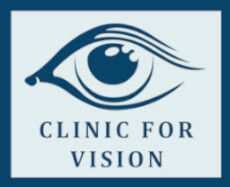Over 80% of learning is visual
Vision is more than 2020 and eyeglasses, there are many different ways we process, track, focus, and see the world around us. For one out of every 5 children, an aspect of their vision is interfering with their ability to learn to their full potential. A developmental eye exam will assess the child's vision including aspects such as the ability to track, the ability of the eyes to work together, focusing and other aspects of vision that are so critical to learning.
What is Amblyopia?
Amblyopia or as commonly called, Lazy Eye, is a condition where the brain chooses the vision of one eye over the vision of the other. This causes the unused eye to weaken, which in turn causes the brain to further favor the other eye. Amblyopia is also the largest contributor of vision problems, affecting 3-5% of children, and is a major health concern. Amblyopia can be caused by any vision or focusing issue. The most common cause is where one eye is more near or farsighted or astigmatic than the other eye. Amblyopia may also be the result of strabismus (where the eye turns either inward or outward).
What do we do differently for a developmental pediatric eye exam?
Our optometrists use an advanced technology called the visual evoked potential diopsys. Unlike a regular eye exam, the developmental pediatric eye exam uses the diopsys to assess how the whole visual pathway works. Unlike an eye exam that looks at the refraction of the eye to prescribe glasses, the diopsys examines the flow of visual information, including the anterior segment and the visual cortex, to objectively assess how your child is interacting with the world. Electrodes to the visual cortex measure the stimulus, giving an objective measurement how the child is doing during the treatment.
The visual evoked potential diopsys is done at home and covered by many insurance plans.
Research on the visual evoked potential diopsys
A recent medical study called "A New Visual Evoked Potential System for Vision Screening in Infants and Young Children" concludes that "With its
easy electrode placement and rapid, attractive stimulus, the new system overcomes technical difficulties which were associated with older VEP techniques. The test shows promise as a screening tool for detecting amblyopia and other visual deficits in young children."

